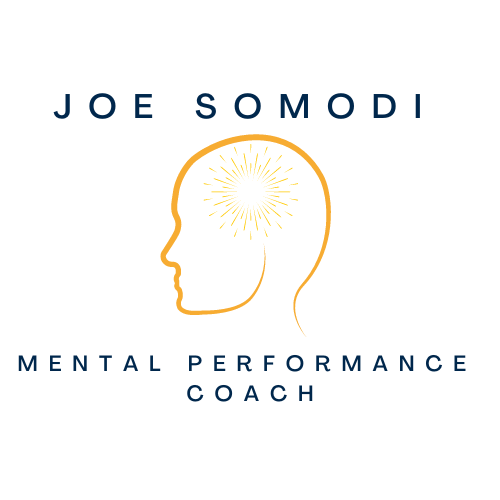Breath Health: The Fundamentals for Optimal Oxygenation and Athletic Performance
by Joe Somodi, Mental Performance Coach
The Power of Nose Breathing for Better Breath Health
The nose is a remarkable organ that plays a crucial role in breathing. It filters and warms inhaled air, keeps us hydrated during exhalation, and sterilizes the air to eliminate allergens, bacteria, and viruses before reaching our lungs. In contrast, the mouth serves no function in the respiratory system except as a backup route for air when the nose is blocked or during intense exercise. Mouth breathing can cause cold, dry air to reach the lungs, leading to dehydration and inflammation of the airways. This can result in exercise-induced bronchoconstriction and make us more vulnerable to infection. In contrast, nose breathing adds resistance, which slows down the breath, relieves stress, and engages our diaphragm, increasing lung volume. Additionally, research shows that breathing through an open mouth exacerbates sleep apnea, while nose breathing reduces its symptoms. James Nestor's bestseller, Breath, The New Science of a Lost Art, gives a personal account of how bad sleep can get when breathing through the mouth. Embracing nose breathing is at the heart of improving breath health, and the LSD breathing method can help. LSD stands for light, slow, and deep, and it's a simple way to remember the big ideas behind training your breath.
Optimize Oxygen Delivery with Light Breathing
During exercise, our muscles generate carbon dioxide, which triggers red blood cells to release oxygen for energy production. While oxygen is essential, carbon dioxide (CO2) is the primary stimulus for breathing. Breathing too fast or hard can lead to excessive CO2 loss, reducing oxygen uptake and delivery. Breath training can help increase tolerance to CO2 changes, optimizing breathing efficiency. The Oxygen Advantage method's Breathe Light exercise decreases breathing volume while acclimating the body to air hunger sensations, improving oxygen delivery while reducing breathlessness. Learning to tolerate air hunger by reducing air volume and sustaining the feeling during exercise is essential to improving stamina. It’s not uncommon for athletes to struggle with this exercise initially. Understanding that breathlessness reflects changes in blood CO2 levels rather than a lack of oxygen is crucial to making progress in breath training.
Here is a link to a YouTube video I created on Breath Light.
Slow Breathing for Enhanced Efficiency and Relaxation
Inefficient breathing can cause breathing muscles to tire and limit an athlete's stamina and exercise capacity. Slow breathing can improve breathing efficiency, as it enhances arterial oxygenation by improving the exchange of oxygen and carbon dioxide. Slow breathing also activates the parasympathetic nervous system, which can reduce stress and improve resilience. The Breathe Slow exercise is recommended to train yourself to breathe at an ideal rate of 4.5 to 6.5 breaths per minute, leading to better performance and reducing breathlessness and stress. (1) Nitric oxide accumulates in the nasal cavity and travels to the lungs when breathing Light and Slow, improving oxygen uptake into the bloodstream while sterilizing the air and opening airways and blood vessels in the lungs.
Learn more about nasal nitric oxide here and check out my YouTube video on Breathing Slow.
Deep Breathing for Core Strength and Stability
Breathing patterns are crucial for maintaining the stability and mobility of the spine and trunk. Diaphragmatic breathing generates intra-abdominal pressure (IAP) that supports the spine and pelvis, making the diaphragm essential for core strength. Athletes with abnormal breathing patterns may experience musculoskeletal conditions and compromised motor control patterns. The optimal breathing pattern involves proper functional movement of the diaphragm, along with the expansion of the lower ribs and intercostal muscles. Dysfunctional breathing, such as chronic hyperventilation, can cause musculoskeletal pain, leading to repetitive strain injury, back and neck pain, and strain. Injuries are common among athletes, with one study finding that approximately 14 collegiate athletes were injured during the competitive season for every 1000 competitors. Furthermore, upper chest breathing activates smaller breathing muscles, which can contribute to the development of trigger points, pain, and strain. Without functional breathing, functional movement is impossible.
Here is a link to my YouTube Video guiding you through Deep Breathing.
Research
[1] Bernardi L, Spadacini G, Bellwon J, Hajiric R, Roskamm H, Frey AW. Effect of breathing rate on oxygen saturation and exercise performance in chronic heart failure. Lancet 1998; 351:1308±1311
[2] Hansen-Honeycutt, Jena, et al. “A clinical guide to the assessment and treatment of breathing pattern disorders in the physically active: part 2, a case series.” International
[3] Hootman JM Dick R Agel J. Epidemiology of collegiate injuries for 15 sports: summary and recommendations for injury prevention initiatives. J Athl Train. 2007;42(2):311-319.journal of sports physical therapy 11.6 (2016): 971.




